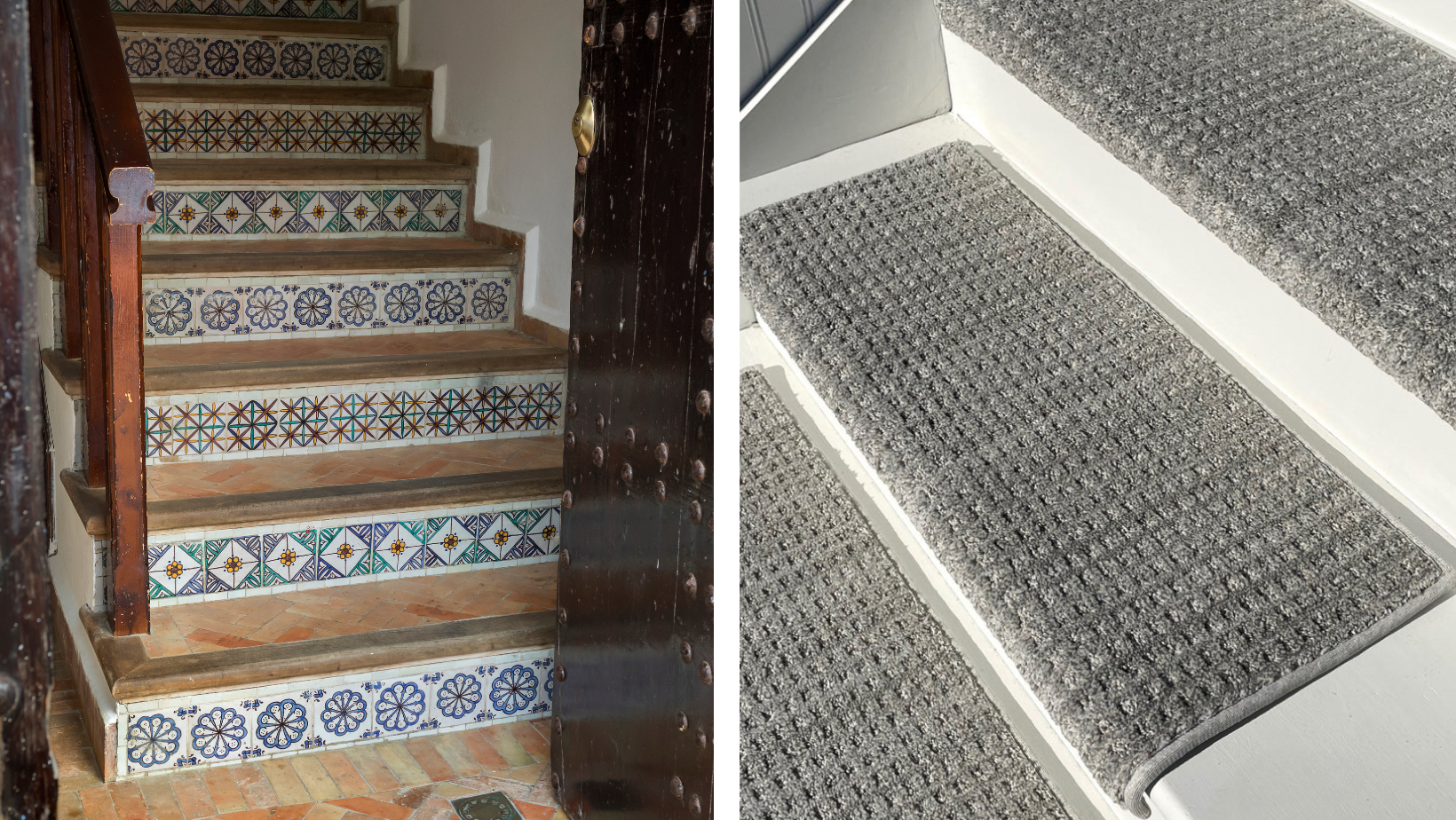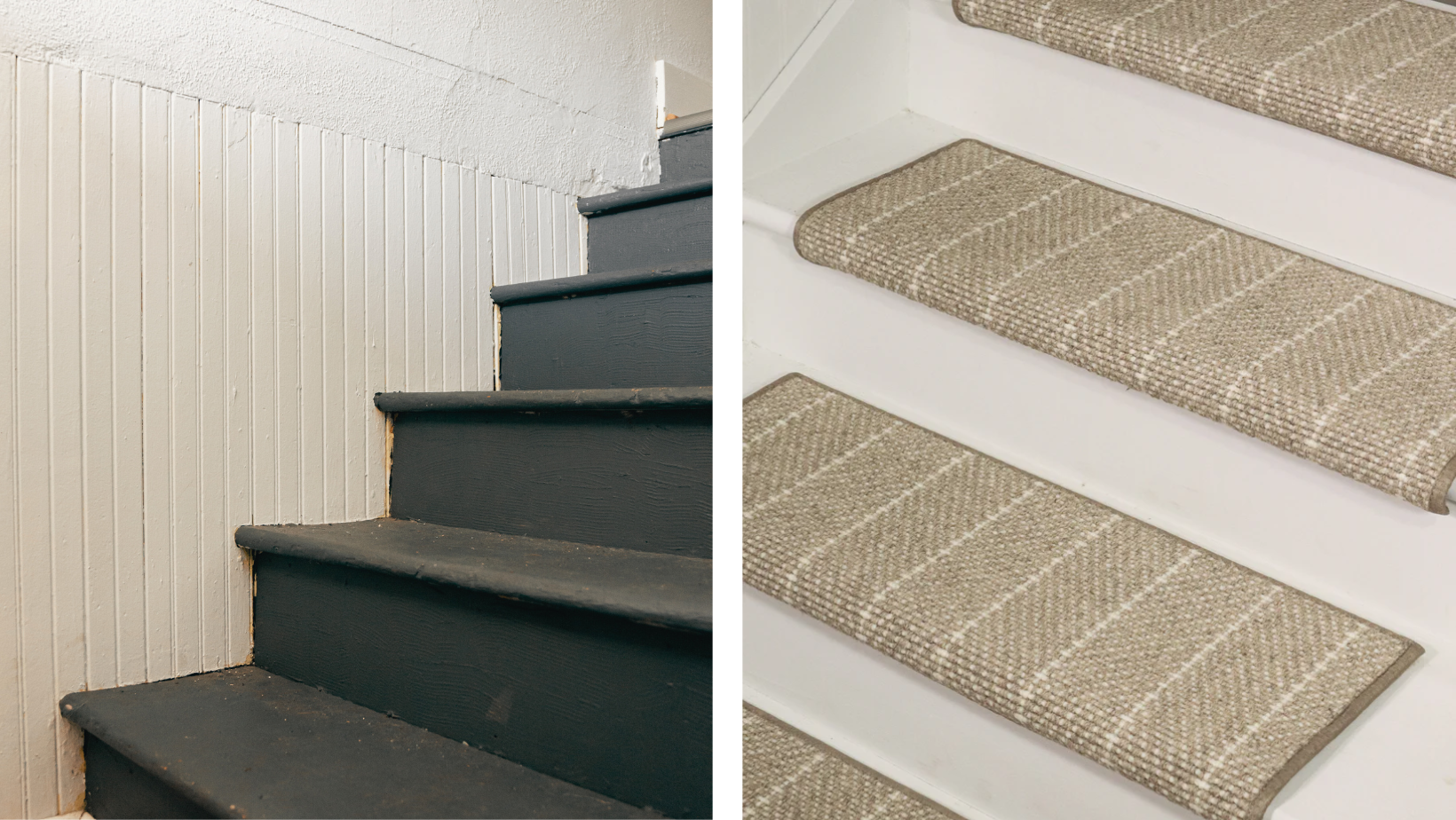Bare stairs can be a safety hazard and lack warmth and comfort, while carpet stair treads provide a non-slip surface and a cozy feel. The transformation from bare stairs to carpeted stairs can make a significant difference in the overall look and feel of your home. Carpet stairs before and after can have a drastic change to your overall aesthetic.
Before vs. After
Stairs before and after can be drastically different. Before the makeover, navigating bare stairs can be daunting, especially for children and pets. The hard surface can be slippery and noisy, and it may lack the aesthetic appeal you desire. However, after installing carpet stair treads, the stairs become safer, quieter, and more visually appealing. The added cushioning and traction provided by the carpet can make a world of difference in both comfort and safety.
The Benefits of Installing Carpet Stair Treads
When it comes to transforming the look and feel of your staircase, installing carpet stair treads can make a significant difference. As is the case with basement stairs before and after. Not only does it enhance the aesthetics of your home, but it also provides a safer and more comfortable environment for you and your family.
Safety and NonSlip Surface
Bare stairs can be a safety hazard, especially for children and pets. The hard surface can be slippery, increasing the risk of accidents. However, carpeted stairs provide a non-slip surface, offering traction and stability with each step.
Comfort and Coziness
Carpeted stairs add a layer of cushioning, making each step softer and more comfortable. The added padding also reduces noise, creating a quieter and more peaceful environment in your home.
Aesthetic Enhancement
The addition of carpet stair treads can completely change the look of your staircase. With a wide range of styles and colors available, you can choose treads that complement your home decor and add a touch of warmth and coziness to the space.
Before the Makeover
Safety Hazards
Navigating bare stairs can be daunting, especially for young children and pets. The lack of traction and stability on a hard surface increases the risk of slips and falls.
Lack of Warmth and Comfort
Bare stairs can feel cold and unwelcoming, lacking the comfort and coziness that carpeted stairs provide. The absence of cushioning also makes each step feel harder and less comfortable.
Aesthetic Concerns
From a visual standpoint, bare stairs may not offer the aesthetic appeal you desire. They can appear plain and lack the warmth and character that carpeted stairs bring to a home.
After the Makeover
Safety Improvements
After installing carpet stair treads, the stairs become safer to navigate. The non-slip surface and added traction provide a secure footing, reducing the risk of accidents and injuries.
Added Comfort and Noise Reduction
The cushioning provided by the carpet treads adds a layer of comfort to each step, making the stairs more inviting to use. Additionally, the padding helps reduce the noise of foot traffic, creating a quieter and more peaceful environment in your home.
Visual Appeal
The addition of carpet stair treads enhances the overall aesthetics of your staircase. With a wide range of styles and colors available, you can choose treads that complement your home decor and add a touch of warmth and coziness to the space.
Choosing the Right Carpet Stair Treads
Material and Durability
When selecting carpet stair treads, consider the material and durability. Look for treads made from high-quality, durable materials that can withstand heavy foot traffic and maintain their appearance over time.
Size and Fit
Ensure that the treads are the right size and fit for your stairs. Measure the dimensions of each step carefully to ensure a proper fit and a secure installation.
Style and Aesthetics
Consider the style and aesthetics of the treads to complement your home decor. Whether you prefer a classic, traditional look or a more modern and contemporary style, there are treads available to suit your preferences.
Installation Process
Preparation and Cleaning
Before installing the carpet stair treads, ensure that the stairs are clean and free of any debris or dust. Any existing adhesive or tack strips should be removed, and the surface should be smooth and even.
Adhesive Application
Apply a strong adhesive to the back of each tread, ensuring even coverage to prevent any lifting or shifting over time.
Securing the Treads
Carefully place each tread onto the corresponding step, pressing firmly to ensure a secure bond. Use a roller to further secure the treads and remove any air bubbles.
Maintenance and Care Tips
Regular Cleaning
Regularly vacuum and spot clean the carpet stair treads to keep them looking fresh and free of dirt and debris.
Addressing Wear and Tear
Over time, the treads may show signs of wear and tear. Address any fraying or damage promptly to maintain the appearance and functionality of the treads.
Replacing Worn Treads
If a tread becomes excessively worn or damaged, consider replacing it to maintain the safety and aesthetics of your staircase.
DIY vs. Professional Installation
Pros and Cons of DIY
DIY installation of carpet stair treads can be a cost-effective option for those with the necessary skills and tools. However, it requires careful attention to detail and may be time-consuming.
Benefits of Professional Installation
Professional installation ensures a precise and secure fit, with the expertise to address any potential challenges. It can save time and effort while providing a professional finish.
Cost Considerations
Consider the cost of materials and tools for a DIY installation versus the expense of hiring a professional. Factor in the time and effort required for a DIY project compared to the convenience of professional installation.
Conclusion
The before and after transformation of installing carpet stair treads can completely change the look and feel of your staircase. The addition of carpet not only enhances the aesthetics of your home but also provides a safer and more comfortable environment for you and your family. Whether you're considering a makeover for your own home or simply curious about the difference, this informative article has you covered.




